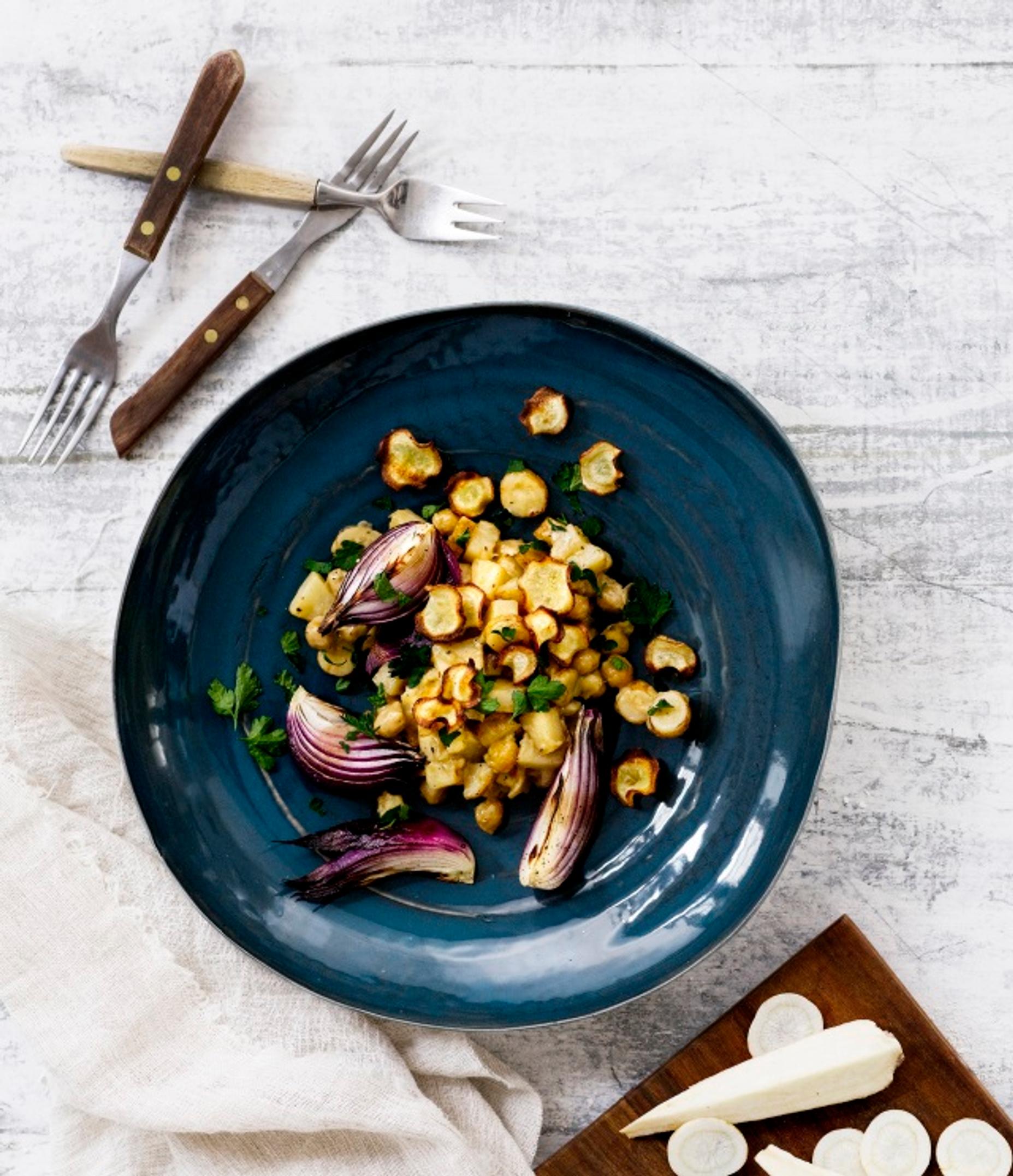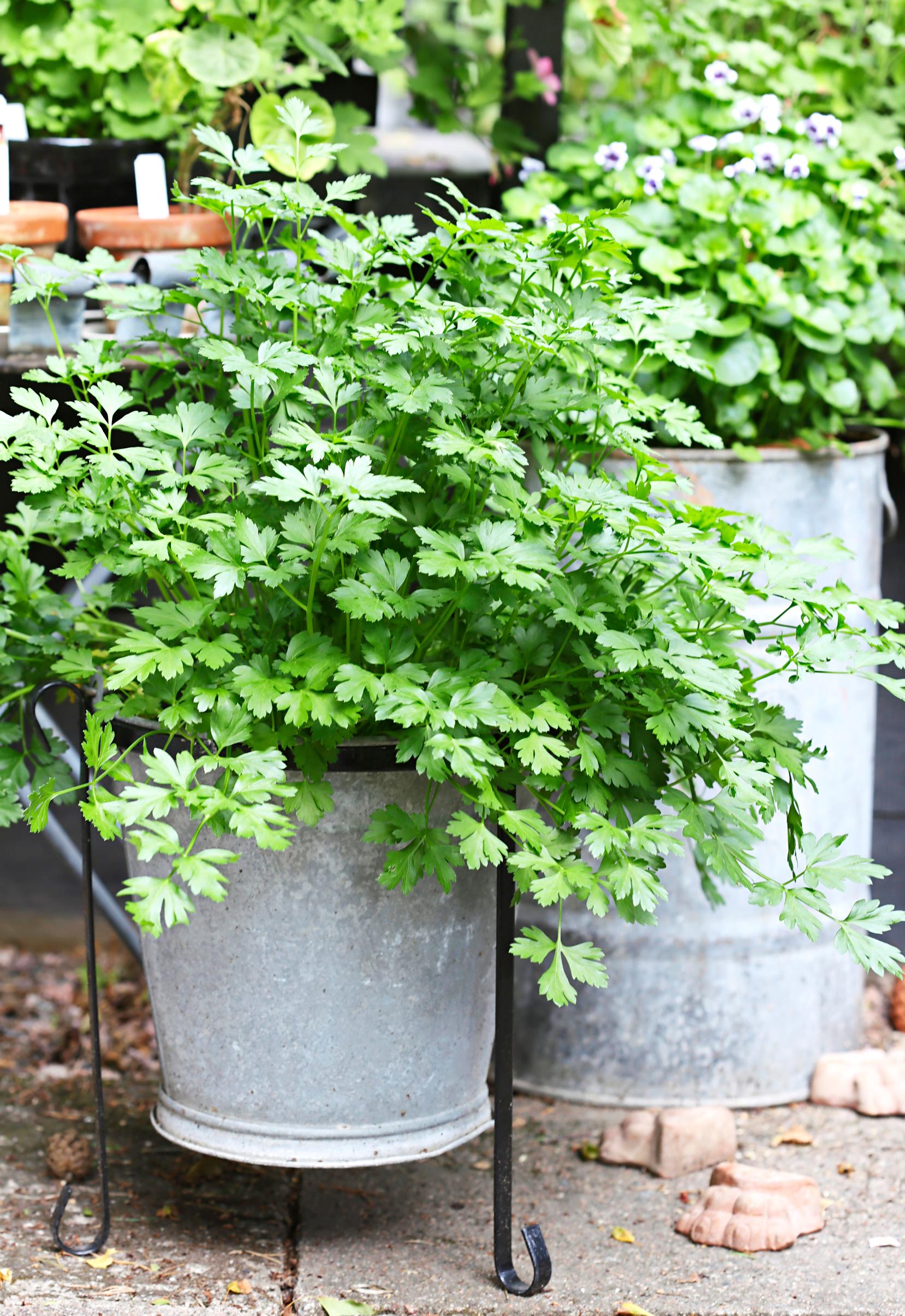
Growing parsley takes time but will reward you with a long harvest—here’s how to grow parsley!
Parsley germinates slowly, but its long-lasting leaf yield and spicy roots make it well worth the effort. The plant comes in three forms: flat-leaf parsley, curly-leaf parsley, and root parsley. Root parsley, which demands a lengthy growing season, benefits most from sowing in the fall. You can also sow the seeds outdoors in a bed or container in late winter or early spring.
Parsley, Petroselinum crispum
- A biennial plant, though commonly grown as an annual.
- Great for pots, garden beds, or greenhouses.
- Needs plenty of water and nutrients, especially in a pot.
- Prefers nutrient-rich, deep, moist soil.
- Prefers a sunny or partly shaded location.
- Very cold-hardy.
- Seeds germinate slowly.
Parsley: tips for success
Growing site
If you want to sow parsley from February through April, prepare the growing spot in the fall. Parsley thrives best in nutrient-rich soil with good moisture retention. The optimal pH is 6–7.
Rotate the growing location to keep the plants healthy. Like dill and carrots, parsley belongs to the umbellifer family, so it’s best not to grow them in the same spot two years in a row.

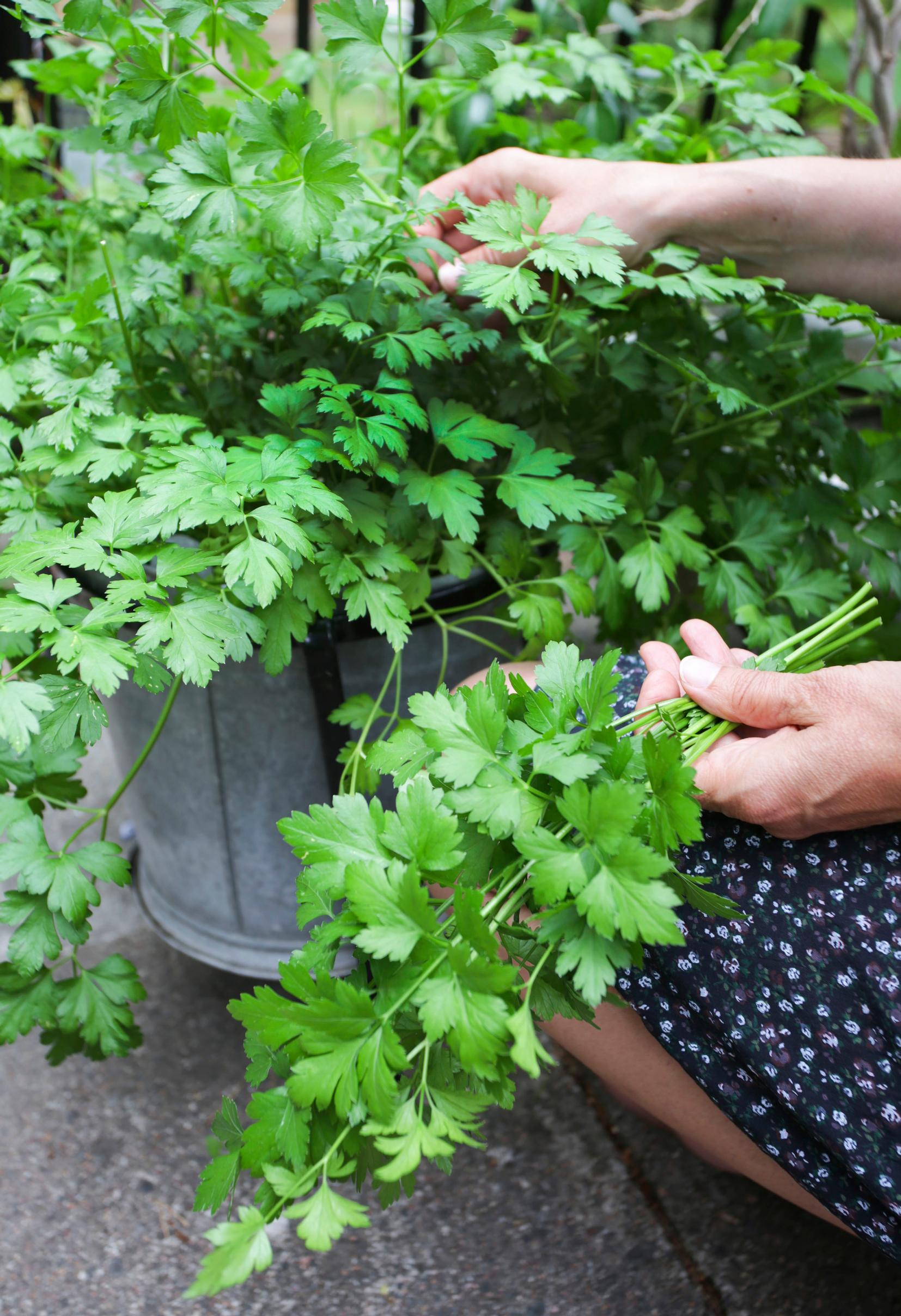
Sowing parsley in fall
Because parsley germinates slowly, it’s generally best to sow it in the fall. In particular, root parsley, which is typically grown as an annual, is especially well suited for fall sowing because then its root will be able to strengthen before harvest. Try sowing parsley in well-draining raised beds in October or November. Cover the seeds at a depth of 1–2 centimeters.
Pre-cultivation
If you want an earlier harvest of flat-leaf parsley, start seedlings indoors and pre-cultivate them for 4–8 weeks in early spring. Scatter the seeds directly into pots in clusters of 5–10 seeds.

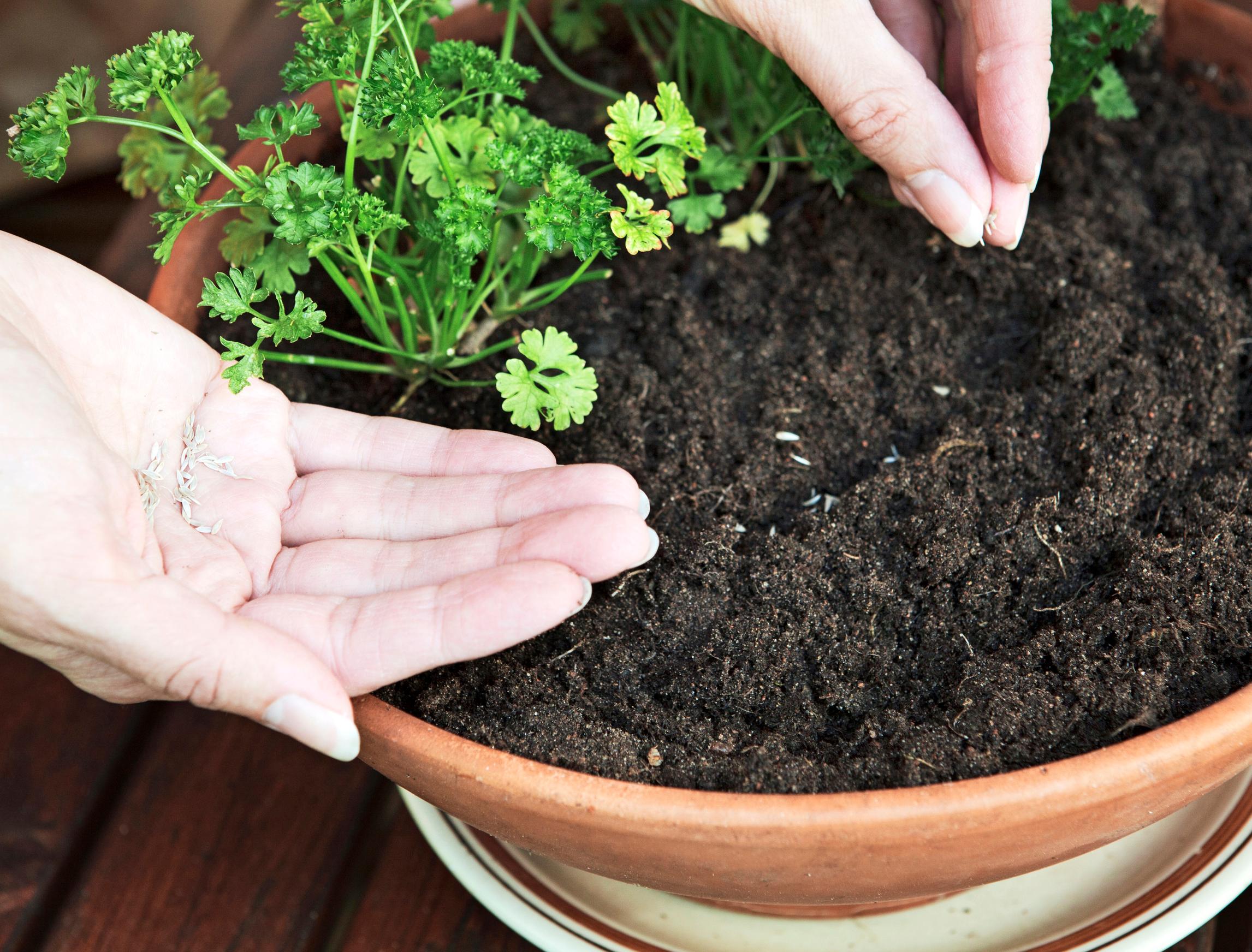
Sowing parsley in spring
If you’re sowing parsley in spring, you can speed up germination by soaking the seeds in warm water overnight. Watering the seed furrow with warm water also helps.
Mix parsley seeds with sand before sowing. Also add sand to the bottom and top of the 5-centimeter-wide seed furrow to help retain moisture.
Parsley germinates fastest in around 20°C, so a row cover is helpful for early sowings. Weed regularly and apply organic mulch. Keep the soil moist and fertilize throughout the summer.
Thinning
Parsley takes three to four weeks to germinate. Once the seedlings appear, thin them so that they are five centimeters apart at first, then increase the spacing as they grow.
Without fall sowing, starting seedlings indoors, or speeding up germination, parsley only yields a decent harvest in late summer. That’s why it’s best to buy at least a few ready-grown seedlings at the start of summer.
Harvesting
You can harvest flat-leaf parsley well into fall by cutting the plants a few centimeters above the ground. Alternatively, you can pick the outer leaves.
Root parsley leaves are used much like flat-leaf parsley and have a bold flavor. In late summer, when the growing space becomes tight, you can harvest some of the thinner roots with their tops and reserve the main harvest for October.
Overwintering parsley
- Overwintered parsley produces leaves earlier than spring-sown plants. It does best in well-draining soil beneath a cover of snow or leaves. Hardiness varies by variety. It’s a good idea to prune the plantings heavily in early summer to slow down the development of flower stalks. After the plants have flowered, you can collect parsley seeds throughout the summer.
- You can jump-start overwintered parsley by transferring it into a greenhouse or a pot.
- Leave some root parsley in the ground for harvesting in early spring. In fall, you can extend the season by covering the crop with leaves. Remember, however, that voles like these tasty roots too.
Parsley: varieties

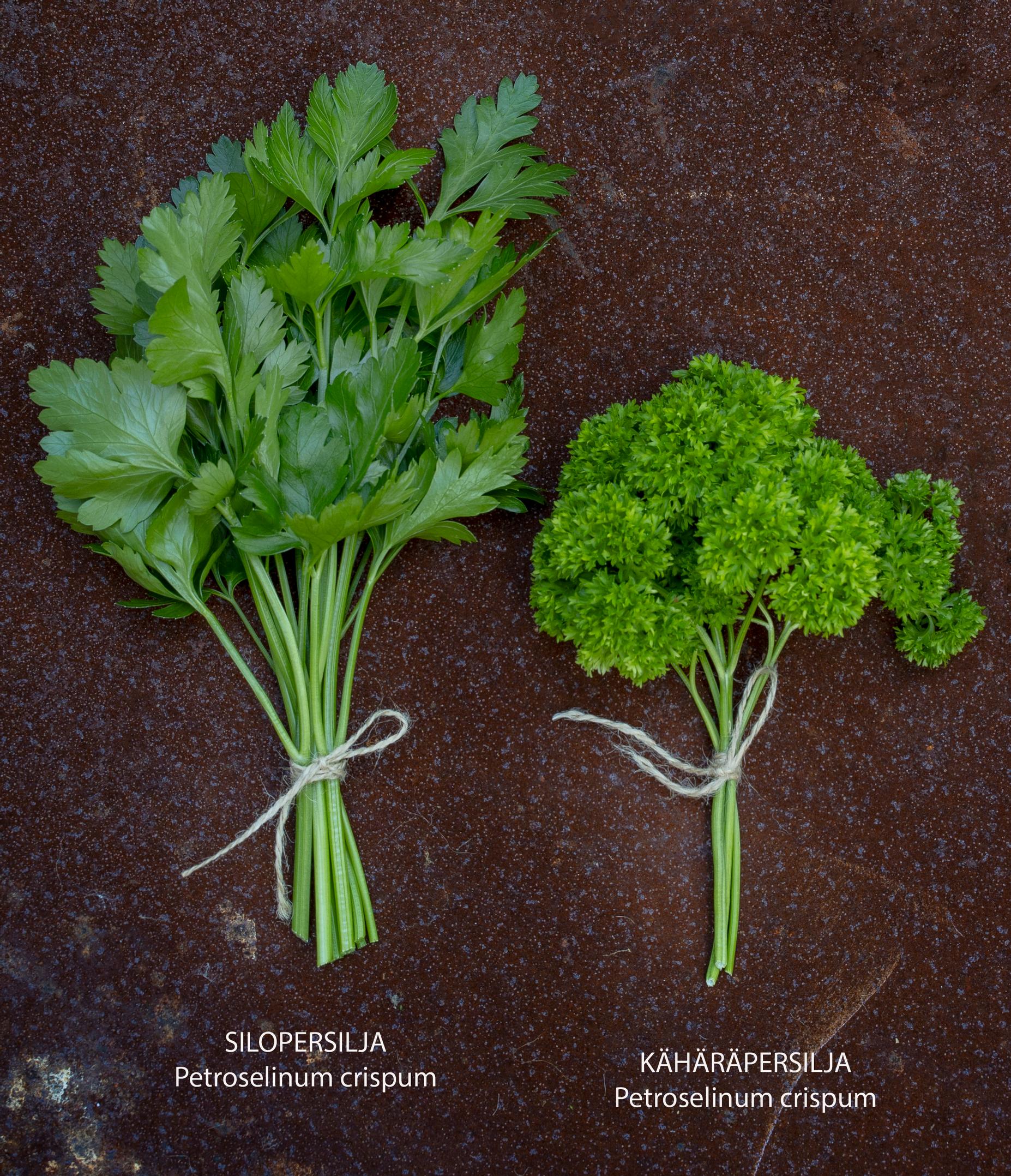
Curly-leaf parsley (Petroselinum crispum var. crispum)
- Different cultivars offer different flavors, and it’s often the top choice for garnishing dishes.
- ‘Grüne Perle’ is a deep green curly parsley with exceptionally crinkly leaves.
- ‘Moss Curled 2’ is a popular curly-leaf parsley.
Flat-leaf parsley (Petroselinum crispum var. neapolitanum)
- Flat-leaf parsley is popular in Central Europe and the Mediterranean region. It has a mild, aromatic flavor.
- ‘Gigante di Napoli’ / ‘Gigante d’Italia’ is known for its rich aroma. Its leaves are large and dark green.
- ‘Laura’ is a flavorful and ornamental flat-leaf parsley with good resistance to powdery mildew.
Root parsley (Petroselinum crispum var. radicosum)
- Root parsley is also worth growing. It thrives in slightly alkaline, sandy soil. If the pH is below 5.5, apply lime first.
- You can use root parsley’s smooth leaves in the same way as regular parsley. Harvest the leaves frequently to encourage the plant to focus on root development.
- Harvest the roots in late fall. Use them like parsnips in soups or raw, grated in salads. The roots are made of a brownish-yellow taproot with thin lateral roots. The root is the most aromatic part of the plant.
- ‘Halblange’ is a popular root parsley that grows medium-length roots and has strong resistance to powdery mildew.

